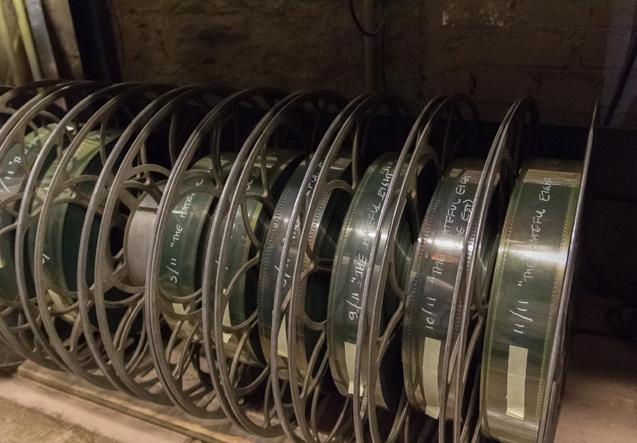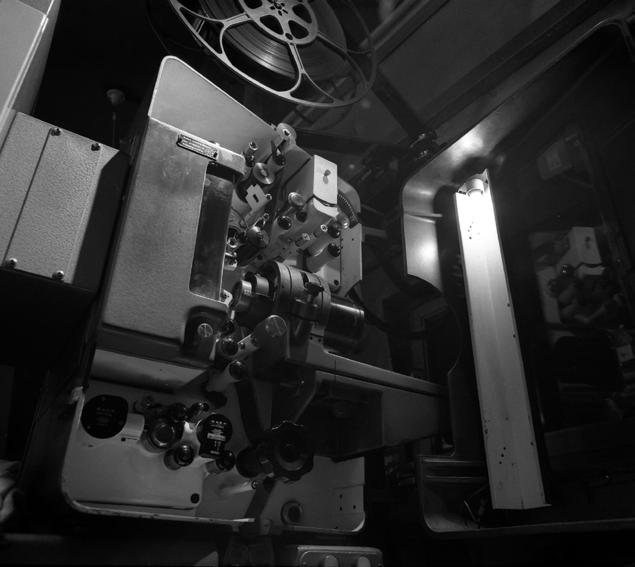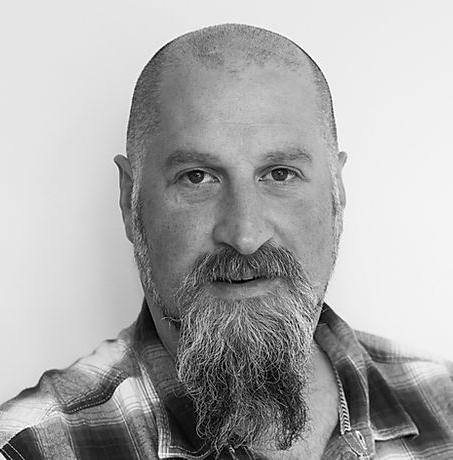
2 minute read
Sixty seconds with our senior engineer, Pete
Based in Scotland, our Senior Engineer Pete Naples has been working in the cinema world since 1991… and has more than a few stories to tell.
What inspired you to pursue a career in cinema technology?
Advertisement
I was the ‘AV kid’ at school, always interested in anything that made an image or a noise. I always wanted to be a photographer; I sort of fell into cinema when that path ended.
How did you get started in this field, and what led you to join Omnex?
In my teens I had a weekend job as a projectionist. Leaving school I worked in what we’d call today: ‘content creation’. We worked all over the UK and Europe. Photographing petrol pumps, capturing video of offshore fire training, covering royal visits. From there it was live music and theatrical sound as well. Again, if it made a noise or an image, I was there.
Whilst at University I needed a job, so wrote to all the cinemas. Initially I started at the ABC on Lothian Road, moving on to the Cameo. I took relief shifts at others. At almost every cinema I worked in, our equipment was serviced by Omnex.
Simon Galton, the Omnex engineer at the time would visit the Cameo and he would drive up from Leicester. I asked if it made sense for me to cover Scotland?
One visit, he arrived with Ged Atherton in tow. A conversation was had over dinner, and here I am. That was 1998.
How do you stay up-to-date with the latest cinema technology trends and advancements, and what resources do you rely on for information?

Manufacturers’ websites, bulletins, etc. We should also look outside our field, can equipment from the AV and live events world be used in ours? Lately we see more and DMX controlled LED lighting. This is actually very old tech, but new to the cinema industry.
What is the most challenging project you’ve worked on, and how did you overcome those challenges?
The setup for Quentin Tarantino’s ‘Hateful Eight’ in Ultra-Panavision 70mm at the Filmhouse, Edinburgh. I collected lamphouses from Belfast. Grafting those 1990’s lamphouses onto 1950’s Phillips DP70 projectors, with help from a local blacksmith. Aligning both projectors in terms of their film path (this was quite tricky, following the procedure in the manual meitculously, taking readings with dial-calipers, dial-test-indicator and a micrometer. Optically aligning those lamphouses and finding the sweet-spot in terms of light output, calculating the appropriate backing lenses to go with the special anamorphic attachments, then cutting the plates neatly.
As far as I know, no-one else ran that film on two projectors. Three cinemas in the UK ran it 70mm, the other two had platters. As far as I know all of the 100 or so screens in the US had platters. We had a hard time getting the distributor to understand why we needed two anamorphs when the Odeon Leicester Square just needed one! No-one working in the UK industry at the time had worked with Ultra-Panavision 70mm, so I couldn’t ‘phone a friend’. Legends like Steve Grant, and Nigel Shore were long retired. A lot of sketches were made, some out-loud thinking and a fair bit of swearing. It worked very well.

What motivates you to come to work, and what advice do you have for someone starting out in this field?
I have a wife, two kids and a mortgage... But I’m really motivated by customers, many of whom I consider as friends. I was always given the advice, “don’t!”. Thirty years on I’m still here, cinema is still here. Learn something every day!

What is the future of cinema technology, and how do you think Omnex will be a part of that?
I don’t know... AI, immersive technology, LED screens, telepathy or maybe LED illuminated projectors? One thing I do know, the industry has to keep evolving. Yes, there are lots of lovely old cinemas, but they are not using the same seats, the same sound, HVAC or projection technology as they did when built.
Omnex has its 36-year roots in the industry, we have grown, kept up with technology and now we are bigger, better and stronger, we will continue to keep on the leading edge.










